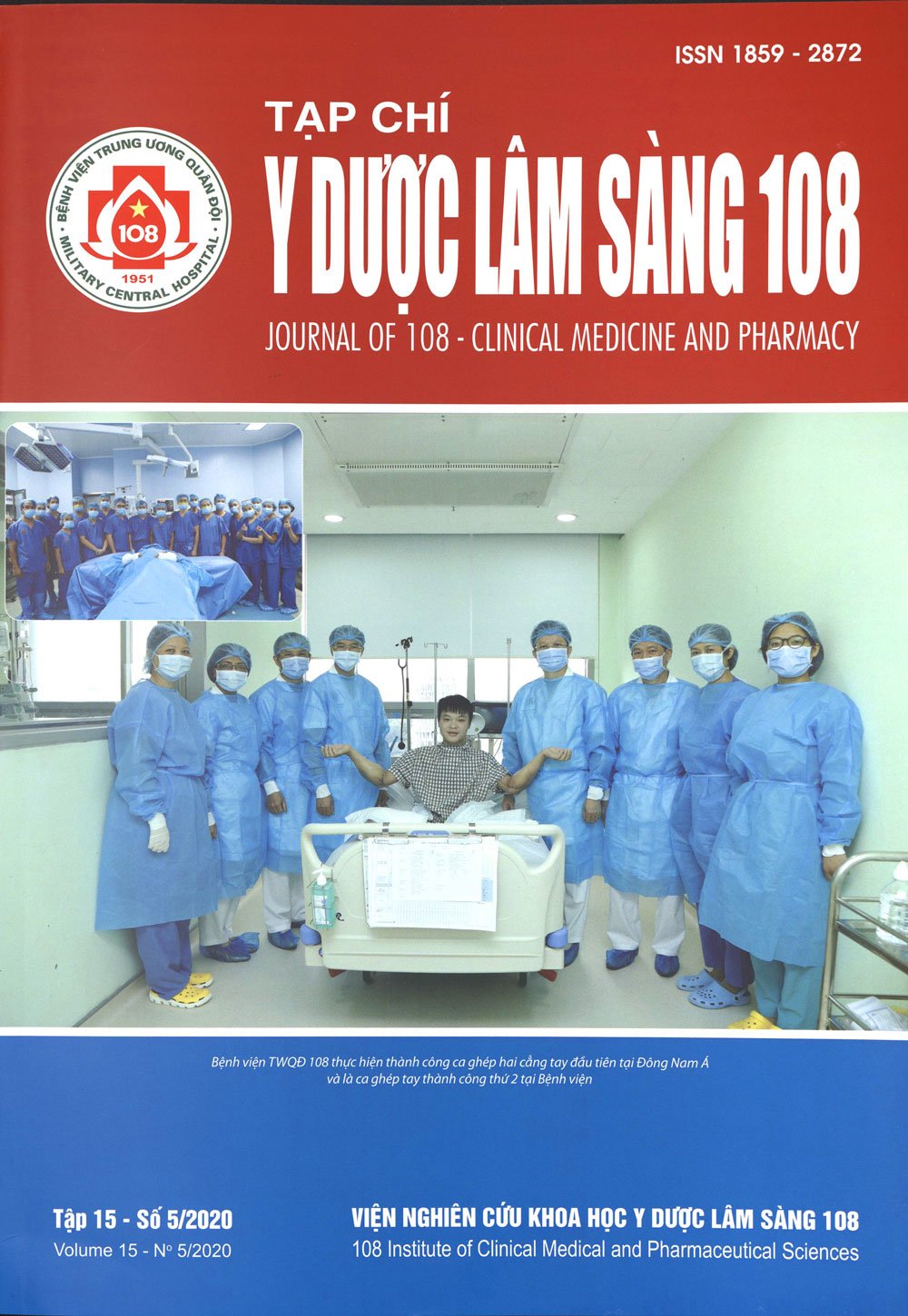Comment of the rate and some clinical features of Parkinson's disease patients treated in 103 Military Hospital
Main Article Content
Keywords
Abstract
Objective: To determine the rate of Parkinson's disease and analyze some clinical characteristics of patients with Parkinson's disease, inpatient treated at 103 Military Hospital during 2018 - 2019. Subject and method: 178 patients diagnosed with Parkinson's disease according to the criteria of Parkinson and Movement Disorder Society 2015, treated at the Department of Neurology, 103 Military Hospital, from 1.1.2018 to 31.12.2019. The study was designed as descriptive research and cross-sectional one. The patient's information was collected according to a consistent medical record and according to valuable diagnostic tests, widely used in studies. Result: 178/6381 (2.8%) of Parkinson's patients were treated at the Neurology Department. Symptoms of dyskinesia and tremor were mainly with 98.3% and 95.5%; non-motor symptoms include sleep disorders, gastrointestinal disorders, autonomic nervous disorders, cognitive impairment, and depression accounted for 75.3%, 62.9%, 57.3%, 51.7% and 47.2% respectively. L-Dopa and dopamine agonists were used in 95.5% and 57.3% of patients. 100% of Parkinson's disease patients with depressive disorders were treated with selective serotonin reuptake inhibitors. Quetiapine and olanzapine were applied to 56.1% and 43.8% of patients. Conclusion: The rate of Parkinson's disease patients in the Department of Neurology-103 Military Hospital was 2.8%. Motor symptoms were seen in most patients, the non-motor symptoms were mainly sleep disorders, depression, cognitive impairment, constipation, and autonomic nervous disorders. The disease occurred in all stages, but the early and moderate stage accounted for the majority (88.1%). Dopamine agonists, dopamine supplements (L-dopa), serotonin selective reuptake inhibitors, quetiapine and olanzapine were used regularly to treat Parkinson's disease patients.
Article Details
References
2. Hoàng Lê Nguyên (2015) Nghiên cứu đặc điểm lâm sàng, mật độ xương và nồng độ canxi, vitamin D huyết tương ở bệnh nhân Parkinson. Luận văn chuyên khoa II, Học viện Quân y.
3 Nhữ Đình Sơn (2012) Nghiên cứu các triệu chứng rối loạn tâm thần ở bệnh nhân mắc bệnh Parkinson. Tạp chí Y Dược học Quân sự, (4), tr. 87-96.
4. Barnett R (2016) Parkinson's disease. Lancet, 387(10015), 217. doi:10.1016/s0140-6736(16)00049-0
5. Cacabelos R (2017) Parkinson's disease: From pathogenesis to pharmacogenomics. Int J Mol Sci 18(3). doi:10.3390/ijms18030551.
6. Connolly BS, Lang AE (2014) Pharmacological treatment of Parkinson disease: A review. JAMA 311(16): 1670-1683.
7. Gorcenco S, Ilinca A, Almasoudi W, Kafantar E, Lindgren AG, Puschmann A (2020) New generation genetic testing entering the clinic. Parkinsonism Relat Disord. doi:10.1016/j.parkreldis.2020.02.015.
8. Kieran C, Breen, Gerda Drutyte (2013) Non-motor symptoms of Parkinson’s disease: The patient’s perspective. J Neural Transm 120: 531-535.
9. Rua Rafael AS, Pinto Barbosa JM, Silva Leao Rosas MJ, Lobo Almeida Garrett CM (2016) Parkinson's Disease and development of levodopa induced motor complications: Influence of baseline features and first medical approach. Porto Biomed J 1(4): 136-141. doi:10.1016/j.pbj.2016.08.001.
10. Schneider RB, Iourinets J, Richard IH (2017) Parkinson's disease psychosis: Presentation, diagnosis and management. Neurodegener Dis Manag 7(6): 365-376. doi:10.2217/nmt-2017-0028.
 ISSN: 1859 - 2872
ISSN: 1859 - 2872
